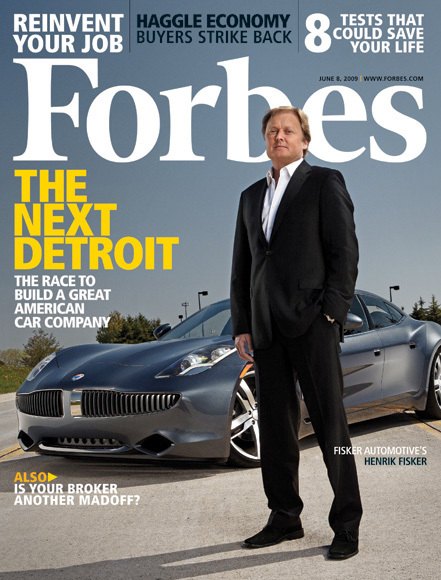The Fisker Saga, Courtesy of GigaOM

Most of our readers probably already know the broad strokes of the Fisker story. If you’re interested in the finer details of the history of the extended range EV company that appears to be circling the drain, GigaOM, a site that covers the investment side of tech companies, has published a fairly comprehensive 4,000 word look back at Fisker by Katie Fehrenbacher.
While the ~$200 million that Fisker received in Dept. of Energy loans has gotten a bit of attention, that’s only a small fraction of the $1 billion plus that the EV startup burned through since 2007. The bulk of that money came from venture capital firms like Kleiner Perkins as well as private investors.
Fehrenbacher’s been covering Fisker from the beginning and for this article she conducted a dozen recent interviews with individuals at the heart of the Fisker story. The focus is primarily on the financing, but she also goes into Fisker’s business model for building cars, like the curious fact that the company paid up front for 15,000 cars’ worth of components from suppliers, though it only assembled about 2,000 Karmas.
They also apparently paid BMW at least something in advance for the engines Fisker was going to be using on its second model, the Nina/Atlantic, though production on that car wasn’t going to start for years. Fehrenbacher also described the company as top heavy with experienced auto industry executives, many of them highly compensated refugees from Detroit.
As they say, read the whole thing here.
Ronnie Schreiber edits Cars In Depth, a realistic perspective on cars & car culture and the original 3D car site. If you found this post worthwhile, you can dig deeper at Cars In Depth. If the 3D thing freaks you out, don’t worry, all the photo and video players in use at the site have mono options. Thanks for reading – RJS

Ronnie Schreiber edits Cars In Depth, the original 3D car site.
More by Ronnie Schreiber
Latest Car Reviews
Read moreLatest Product Reviews
Read moreRecent Comments
- El scotto Dale Carnegie had his grandkids do some upgrades?
- El scotto Work it backwards. How many people use Tesla Super Chargers: Primary Charging Point - this is my normal charging station; Secondary charging station - at a retail location or planned on trips, Rarely or Not at All.
- FreedMike Some clarification would make sense here: Tesla is laying off the team responsible for BUILDING NEW Supercharger stations. Apparently the ones already being built are going to be completed. The folks who maintain the current network are apparently unaffected. https://www.nytimes.com/2024/04/30/business/tesla-layoffs-supercharger-team.htmlAlso, many other other manufacturers are switching to NACS in the upcoming years, and some of those companies are already providing Supercharger adaptors for their non-NACS vehicles. Some Superchargers can already accomodate non-Tesla vehicles with a built in adaptor called the "magic dock."Given all this, my guess? They're trying to maximize utilization of the current system before building it out further.
- Dartman Damn Healey! You can only milk a cow so many times a day! Don’t worry though I bet Flex, 28, 1991, and all the usual suspects are just getting their fingers warmed up!
- FreedMike Your Ford AI instructor:


































Comments
Join the conversation
It sounds like it was an issue of two people who weren't interested in building electric cars as much as building a company that builds electric cars. It didn't help much that the namesake was essentially working for Tesla when he was first approached and seems to have lifted much of the basic design from them. Building a large manufacturer from the ground up is difficult and then using commodity parts seems disastrous. But this is a tale of bad business models more than any attack on the technology.
"The Next Detroit" Who knew it would be so soon!